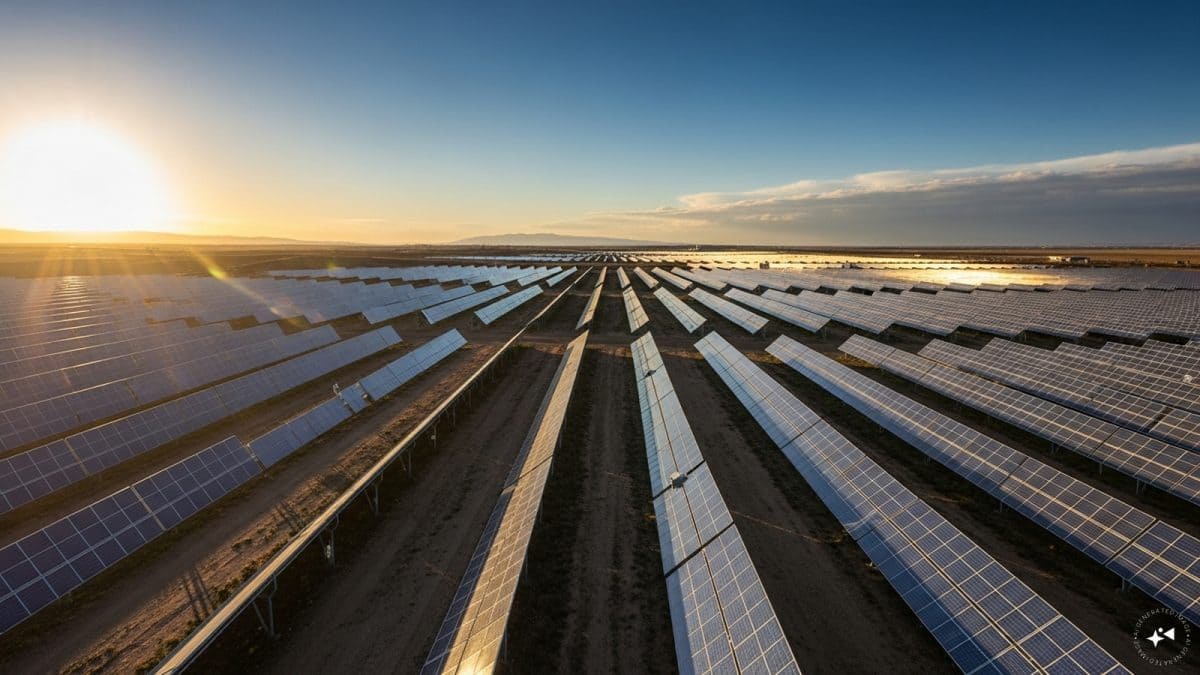The global clean energy transition is defying even the most optimistic forecasts. As world leaders prepare to convene at next month’s COP30 climate summit, the solar power industry has surged far beyond expectations, offering a rare note of progress amid persistent political rifts and uneven commitments to carbon reduction.
According to multiple analyses, there is now four times more installed solar capacity worldwide than experts in 2010 had projected for 2035. This unprecedented expansion has helped temper earlier fears of runaway global warming: temperature rise predictions once as high as 4 °C by century’s end have now been revised down to around 2.6°C, driven in large part by renewable energy adoption and declining reliance on fossil fuels.
STORY CONTINUES BELOW THIS AD
The International Energy Agency (IEA) describes this transformation as “the fastest energy technology deployment in history.” Once seen as an expensive alternative, solar is now the cheapest form of electricity in most parts of the world, spurring investment, reshaping power markets, and altering the geopolitical balance of energy dependence.
Yet even as the global picture brightens, momentum remains uneven. Nowhere is this contrast clearer than in the United States, where President Donald Trump’s administration has dismantled clean energy incentives, slashed subsidies, and tightened permitting rules, stalling the very progress that once positioned America at the forefront of the renewable revolution.
While US states such as California and Texas continue to see strong private-sector investment, national policy has turned sharply inward. Trump’s rollback of federal clean energy tax credits, combined with his administration’s expansion of oil and gas drilling, has left the country lagging behind China, the European Union, and India in new solar installations.
A backdrop of progress ahead of COP30 Next month, delegates will gather for the COP30 climate conference amid both hope and uncertainty. The boom in renewable energy particularly solar, provides a strong counterpoint to fears of climate inaction. Yet, even as countries like China, Britain and Australia announce ambitious climate targets, the European Union remains divided on its 2040 emission goals.
According to EU documents seen by Reuters , bloc members have failed to reach consensus on cutting emissions by 90% by 2040, with final negotiations expected just days before the summit. “We are walking a knife’s edge,” one EU diplomat said, warning that failure could weaken the EU’s climate leadership at COP30.
STORY CONTINUES BELOW THIS AD
Europe’s divisions cloud its leadership claim The EU’s inability to finalise its climate target highlights the growing tension between ambition and economic reality. Wealthier members such as Sweden and Spain back aggressive emission cuts, while others, notably Poland and Italy have voiced concerns that rapid decarbonisation could harm domestic industries.
A particularly divisive issue is the use of foreign carbon credits. France has proposed that countries be allowed to offset up to 5% of emissions using credits from developing nations, while Germany supports a stricter 3% cap. Poland has pushed for an even higher threshold, citing industrial competitiveness. A French proposal to include an “emergency brake”, allowing countries to ease their targets if forest carbon absorption underperforms has also divided opinion.
Global solar power gains but uneven momentum Even as Europe wrestles with internal disagreements, solar power’s rise has tempered global pessimism on climate goals. According to WebProNews , solar capacity worldwide is expanding at a pace far beyond earlier expectations driven by lower costs, mass manufacturing in Asia, and breakthroughs in storage technologies.
However, this progress is uneven across regions. China leads the charge, accounting for more than half of global solar additions, followed by rapid growth in India, the EU, and parts of Latin America. By contrast, the United States has seen momentum stall sharply amid policy reversals under the Trump administration.
Trump’s rollback slows US transition US support for solar has collapsed following President Donald Trump’s decision to scrap subsidies and roll back renewable energy incentives. New permitting rules have further complicated project approvals, creating uncertainty for investors. Analysts warn that this policy reversal could make the US one of the few major economies to fall short of its renewable capacity targets by 2030.
While states like California and New York continue to push aggressive clean energy mandates, the lack of federal coordination has left America lagging behind global peers. Industry experts say this slowdown threatens not just climate commitments but also energy security, as the world moves towards decentralised, renewable-driven grids.
STORY CONTINUES BELOW THIS AD
Outlook: optimism, tempered by politics The solar boom demonstrates what coordinated investment and innovation can achieve in a relatively short span. But political divisions , both within the EU and the US threaten to blunt the full potential of this transformation.
As COP30 approaches, the world faces a paradox: technological progress has outstripped expectations, yet political will remains fragmented. Whether the coming decade delivers on the promise of a renewable revolution may depend less on engineering breakthroughs and more on governments finding consensus to sustain the momentum already underway.
With inputs from agencies
https://www.firstpost.com/world/cop30-despite-trump-cuts-solar-energy-booms-outperforms-growth-predictions-ws-e-13946821.html





